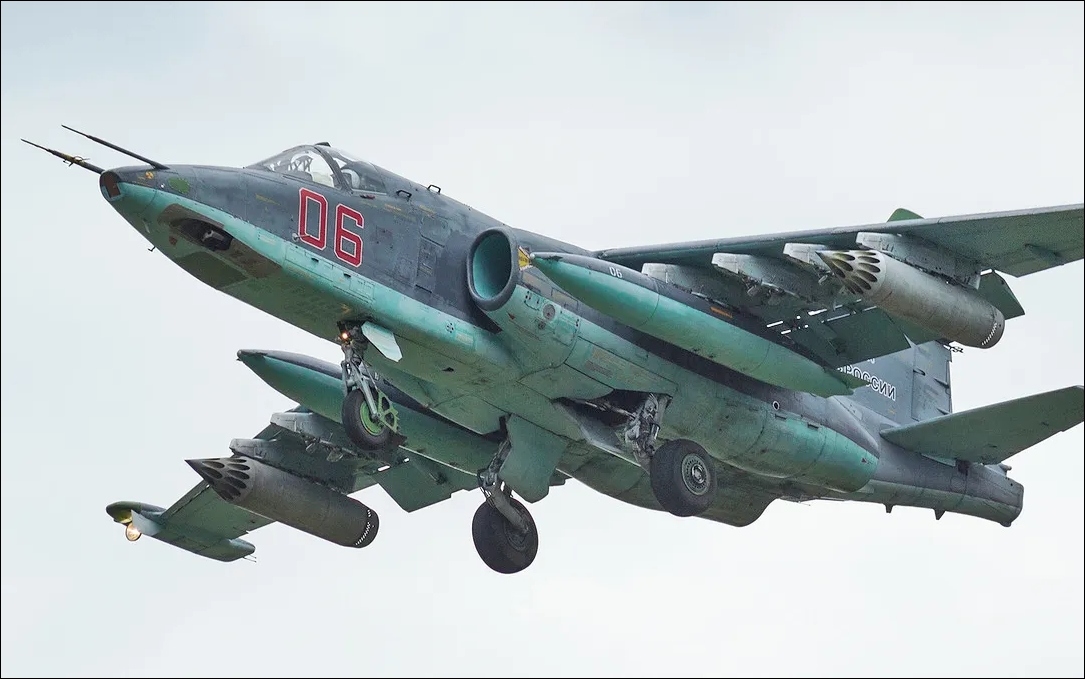The Sukhoi Su-25, known by its NATO reporting name “Frogfoot,” is a versatile and rugged ground-attack aircraft that has proven its worth on numerous battlefields since its introduction in the 1980s. Developed by the Soviet Union, the Su-25 has been a reliable workhorse for close air support missions, providing critical assistance to ground forces with its impressive array of weaponry and robust design.

Development and Design
The Su-25’s development began in the early 1970s, with the aim of creating an aircraft capable of providing effective close air support for ground troops. The prototype first flew in 1975, and the aircraft entered service with the Soviet Air Forces in 1981. Designed by the Sukhoi Design Bureau, the Su-25 was built to be a tough and survivable platform, capable of operating from austere airstrips and withstanding significant battle damage.
One of the standout features of the Su-25 is its heavily armored cockpit, which protects the pilot from ground fire and shrapnel. The aircraft’s rugged construction includes titanium armor plating around the cockpit and critical systems, making it highly resilient in combat situations. Additionally, the Su-25 is equipped with a variety of redundant systems to ensure it can continue to operate even after sustaining damage.

Armament and Capabilities
The Su-25 is renowned for its formidable armament. The aircraft is equipped with a 30mm Gryazev-Shipunov GSh-30-2 twin-barrel autocannon, mounted in a ventral pod beneath the fuselage. This powerful cannon is capable of firing up to 3,000 rounds per minute, making it highly effective against both ground targets and enemy aircraft at close range.
In addition to its cannon, the Su-25 can carry a wide array of ordnance on its ten external hardpoints. This includes unguided rockets, bombs, air-to-ground missiles, and air-to-air missiles. The aircraft’s maximum payload capacity is over 4,000 kilograms (8,818 pounds), allowing it to deliver a significant amount of firepower in support of ground operations. Notable munitions include the Kh-25 and Kh-29 air-to-ground missiles, the S-8 and S-13 rocket pods, and the KAB-500 and KAB-1500 guided bombs.

Operational History
The Su-25 has seen extensive combat service since its introduction. It was heavily used during the Soviet-Afghan War, where it proved its effectiveness in providing close air support to Soviet and Afghan government forces. The aircraft’s rugged design and ability to operate from rough airstrips made it particularly well-suited for the challenging conditions of Afghanistan.
In the post-Soviet era, the Su-25 has continued to serve with various air forces around the world. It has been employed in numerous conflicts, including the Iran-Iraq War, the Gulf War, the Chechen Wars, and the Russo-Georgian War. In each of these conflicts, the Su-25 has demonstrated its value as a reliable and effective ground-attack platform.

Modern Upgrades
To keep the Su-25 relevant in modern warfare, several upgrade programs have been implemented. The Su-25SM variant, for example, features improved avionics, enhanced navigation and targeting systems, and upgraded weaponry. These upgrades have extended the service life of the Su-25 and ensured it remains a potent force on the battlefield.
Conclusion
The Sukhoi Su-25 has earned its place as one of the most respected ground-attack aircraft in military aviation history. Its combination of ruggedness, firepower, and versatility has made it an indispensable asset for close air support missions. As the Su-25 continues to receive upgrades and modernizations, it is likely to remain a critical component of many air forces for years to come, standing as a testament to the enduring legacy of Soviet and Russian aircraft design.





